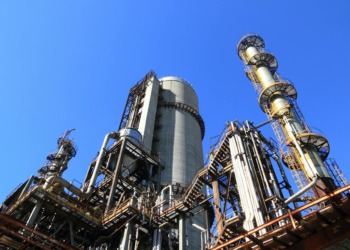Greenhouse gases (GHGs) are the number one cause of climate change. Transportation emissions account for a fifth of global GHG emissions, and for 29% of total US GHG emissions, the US Environmental Protection Agency (EPA) finds.
During COVID19, we saw global GHG emissions temporarily drop massively. One Canadian study found that surface transport emissions had dropped by 36% by April 2020, and showed that commute-related GHG emissions in 2020 to McGill University declined significantly.
Working from home during the pandemic slashed commuting emissions — yet, research from London-based consulting firm WSP UK shows that this was geographically dependent. In the UK, for instance, working from home only saves energy during the summer, due to energy used for heating employees’ homes during the winter months.
Post-COVID, however, emissions grew again. According to a 2022 report by the JRC, the International Energy Agency (IEA) and the Netherlands Environmental Assessment Agency (PBL), global CO2 emissions rebounded in 2021 and were 5.3% higher than in 2020 (0.36% below 2019 levels).
To rectify this, Indian startup MoveInSync aims not to encourage home working, but to revolutionise the commute to work using technology.
Using digital intelligence to get to work
Founded by Deepesh Agarwal and Akash Maheshwari, startup MoveInSync has a Software as a service SaaS platform allowing users to connect to cloud-based apps and each other using the internet.
This SaaS platform is part of MoveInSync’s app, named MoveInSync Ion. The app provides an employee transport management system that allows companies to manage their employees’ office commute, providing access to taxis, shuttles and buses.
This app also enables the organisation of car rentals to visit client locations, and getting to and from airports for client visits, and provides car parking locations.
The startup’s parallel technology is called MoveInSync One — an end-to-end employee commute network, in which companies find MoveInSync’s fleet of over 5,200 taxis, over 500 electric vehicles, shuttles and buses.
The app also provides assistance with companies’ sustainability initiatives, allowing employees to get fast access to carbon savings data after each trip they take through the app, and by using an Electric Vehicle (EV) dashboard to locate and monitor the status of available electric vehicles.
MoveInSync boasts advantageous partnerships and funding
MoveInSync Ion boasts over 300 enterprise clients, including over 65 Fortune500 companies — the 500 highest ranking US corporations according to revenue — as well as 500K+ daily users and the facilitation of over three million taxi trips a month.
Founded in 2009, MoveInSync is engaged with a variety of investors, and is set to raise around $50-$60 million to further the production of their app and allow for partial exit from some of their original backers.
Their named partners include technology innovator company Qualcomm, Nexus Venture Partners, clinical analytics company Saama, among others. Nexus’ statement on MoveInSync’s website bolsters this partnership:
“MoveInSync is the clear market leader, the next best competitor is nearly 1/3rd their size. This position has been achieved by a relentless focus on building the best technology that significantly improves outcomes for enterprises, employees, and driver-partners; ensuring the system is enterprise-grade with minimal downtimes and ability to work in areas with poor connectivity; and best-in-class customer service.” (bolding added)
So, MoveInSync has a promising future as a leader in commuting sustainable technology. That being said, their app does focus on large, corporate commuting, thereby sidestepping smaller businesses and other startups. If their range could extend to include these smaller stakeholders, their sustainable commuting may also prove more inclusive.
Editor’s Note: The opinions expressed here by the authors are their own, not those of Impakter.com — In the Featured Photo: Traffic on a crossroad from above. Featured Photo Credit: Photo by Denys Nevozhai on Unsplash.










